
Donate to Innerviews
Since 1994, Innerviews has provided uncompromising, in-depth interviews with musicians across every genre imaginable. And it does that with no trackers, cookies, clickbait, or advertising.
Your donations are welcome to help continue its mission of highlighting incredible music and artists, without any commercial considerations.
Your contributions will be instantly transformed into stories and videos, and cover hosting and web management costs. Importantly, your dollars will help ensure Innerviews remains absolutely free to all visitors, independent of their ability to financially support it.
Please consider making a donation today by using the PayPal QR code below.

Ricky Nye
The Sound of Freedom
by Anil Prasad
Copyright © 2024 Anil Prasad.
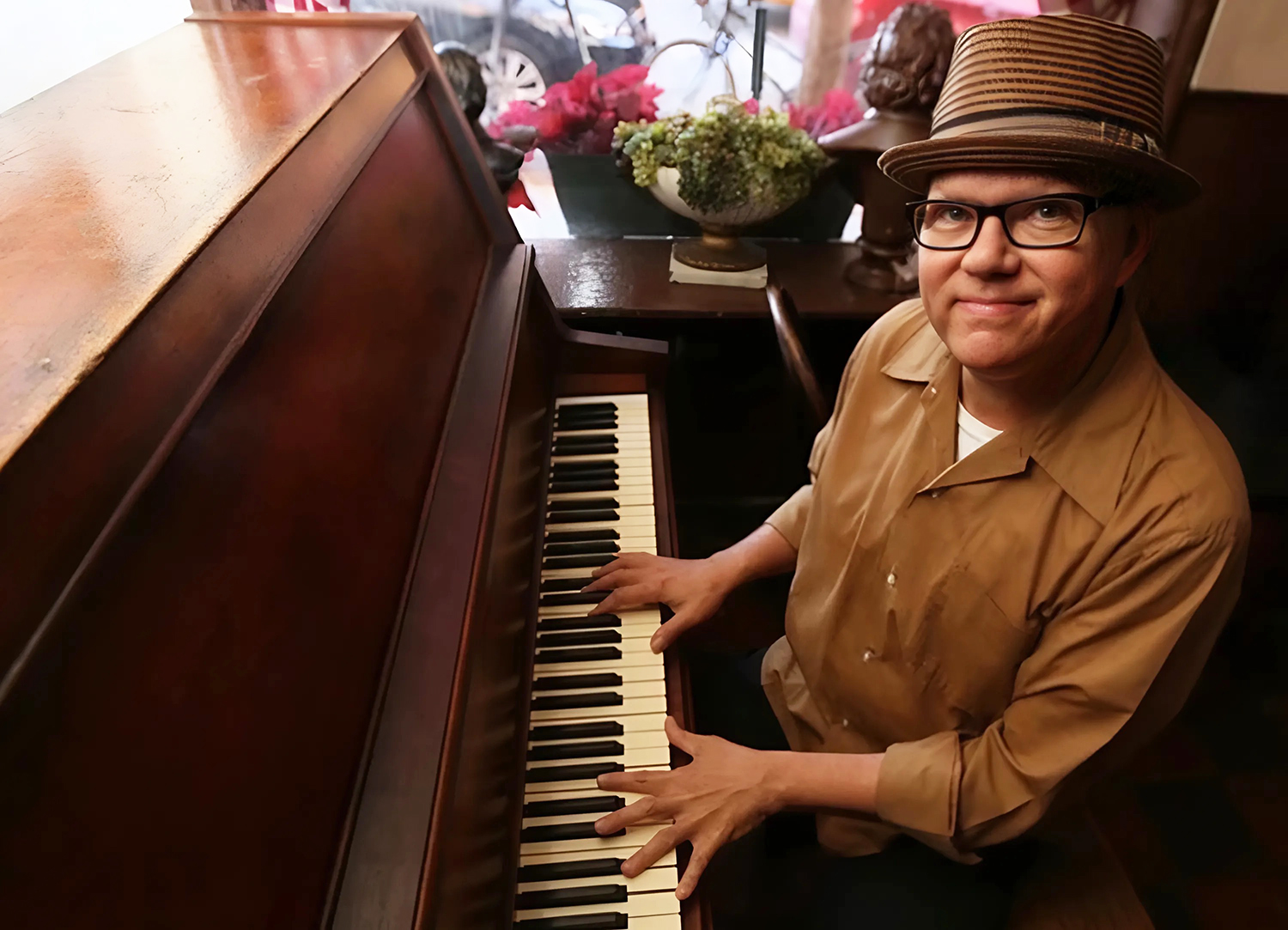 Photo: Ricky Nye CollectionThere’s immense value in projecting the past into the future for keyboardist and vocalist Ricky Nye. Based in the greater Cincinnati area, Nye is one of the world’s foremost practitioners of boogie woogie and blues, with more than a dozen albums to his credit. He’s also a musical chameleon that’s frequently called for sessions by artists who appreciate his ability to mesh his approach into myriad contexts.
Photo: Ricky Nye CollectionThere’s immense value in projecting the past into the future for keyboardist and vocalist Ricky Nye. Based in the greater Cincinnati area, Nye is one of the world’s foremost practitioners of boogie woogie and blues, with more than a dozen albums to his credit. He’s also a musical chameleon that’s frequently called for sessions by artists who appreciate his ability to mesh his approach into myriad contexts.
His prowess in his chosen forms landed him in the International Boogie Woogie Hall of Fame in 2013. He’s also won other significant accolades, including 2019 Blues Artist of the Year at The Cincinnati Entertainment Awards, and Best Local Musician at CityBeat's 2018 Best of Cincinnati Reader’s Awards.
Nye is a regional legend, but he's also been acknowledged globally for more than 25 years. His gig footprint extends to clubs, theaters, and festivals across Europe and Britain, sometimes in the company of The Paris Blues Band, an ensemble that specializes in and promotes roots music overseas.
His most recent album is The Vevay Sessions, recorded in Vevay, Indiana with upright bassist Jerry King, drummer Anthony Ray Wright, and saxophonist Eli Gonzalez. It’s emblematic of Nye’s elastic approach in that it blends boogie woogie, blues, and New Orleans jazz into an energetic, effusive whole. The quartet explores tunes by the likes of Lonnie Johnson, Tiny Bradshaw, Bob Wills, and Hersal Thomas, in addition to “Kay-Bee Boogie,” one of Nye’s improvisations.
While Nye’s focus has largely been on the roots realm, 2024 saw him warp back in time to reunite with The Raisins, the seminal, adventurous Cincinnati rock act whose most popular lineup from 1980-1985 included him, guitarist Rob Fetters, bassist Bob Nyswonger, and drummer Bam Powell. During those years, The Raisins were one of the biggest bands in the area, performing to a devoted following, and scoring a hit single with “Fear Is Never Boring” from their lone 1983 self-titled studio LP.
Last March, The Raisins performed three shows at The Woodward Theater in Cincinnati, which sold out in hours. All proceeds went to charity. The gigs were so successful, the group decided to stage three more concerts this November at the same venue. In addition, the band is the focus of a new documentary titled The Bends: A Film About The Raisins, helmed by multimedia artist and multi-instrumentalist Mike Tittel. The film offers an emotional deep dive into the band’s history, using the March reunion shows as a springboard to tell its fascinating story.
 Photo: Lisa Duesing
Photo: Lisa Duesing
You’re often referred to as someone that focuses on boogie woogie, blues, and jazz. But you’re frequently intermingling forms across your work. Talk about the intersections you explore and how you infuse them with a sense of personal intrigue.
That’s completely accurate. I didn’t get into playing traditional boogie woogie until I was 40. Some people are born playing this stuff, but I came to it later on. I’ve always considered myself to be a student of music, and have always tried to exist within all kinds of different scenarios. I don’t have a style ideology, like someone who may only be into modern jazz. I’m interested in very diverse forms and styles. And where I’ve arrived is a distillation of all of my experiences within them.
I started playing music when I was five and I knew at that time I was going to be a musician. So, that’s been my path and focus since I was a small child. And my philosophy going all the way back to those days relates to a book someone hipped me to called Steal Like An Artist. Basically, that’s what I do. I’m not an imitator, but I grab things from here and there. Anything that catches my ear will find its way into my playing.
These days, you’ll find me playing in boogie woogie, blues, New Orleans jazz, and alternative rock settings. And in a way, it’s all the same to me. I’m often asked “What kind of music do you play?” My answer is “I play rhythm music.” That’s how I feel. If it’s got a pulse, even as a ballad, it’s all rhythm music. That's the essence of what I do.
You’re a drummer in addition to being a keyboardist. How does that inform your work?
In both contexts, there’s an independence to what each limb is doing. Drumming has provided me with a strong rhythmic sense in terms of where things should go over the course of a number, and where they should settle.
I started playing drums at age 12 by accident. I was at a cousin’s house and one of them played drums. I walked over to play my uncle’s Hammond organ, but during the course of the evening I wound up at the drum set, and a switch was flipped. At that moment I discovered I had an aptitude for drumming.
Keyboards and drums go hand in hand. Look at Jan Hammer and the late Chick Corea. Both of them were fantastic drummers, in addition to being amazing keyboardists.
The piano is a percussion instrument, so it all makes sense.
You’ve called what you do “organic music.” Discuss your attraction to keeping things simple and focused.
I love playing solo and I do it a lot. I’ve always believed in organic performance. A solo performance by a musician on keyboards or guitars can be very special and creative.
I’m not so enamored by people who play an instrument but are also running sequences from iPads, or using vocal harmonizers during their performances. I prefer to hear a person play and sing, without the technological assistance.
Organic performance also means you can go anywhere during your show. I find it liberating that I can change things around and make decisions on the fly.
What’s your perspective on the importance of keeping traditional genres alive and thriving in the modern world?
This goes back to the idea of organic music being roots music. It has been around forever. These traditional forms will never die as long as there are mentors and young people take to them and pass them along.
Boogie woogie is a style that was formulated for and played at “rent parties,” which is what they used to call house parties back in the '20s and '30s. You had people like Earl "Fatha" Hines, James P. Johnson, Fats Waller, and Eubie Blake in Harlem, and Jimmy Yancey, Meade Lux Lewis, and Albert Ammons in Chicago performing it.
John Hammond, the record producer, held a series of concerts called From Spirituals to Swing at Carnegie Hall in the late ‘30s that brought boogie woogie to the general public, and suddenly people went berserk for it.
Shortly thereafter, boogie woogie became a craze, then a fad, and then it became diluted. There were big bands and vocal groups like The Andrews Sisters doing their versions of the style, then it slowly faded away from large-scale public consciousness. However, overseas, it remains a viable art form. They’re keeping it alive, but in America there are also still some serious practitioners to this day.
This is an art form that’s always been in a bit of danger, compared to blues and jazz, but it’s not going anywhere. There are some of us out there committed to it and when the public encounters it, they really love it.
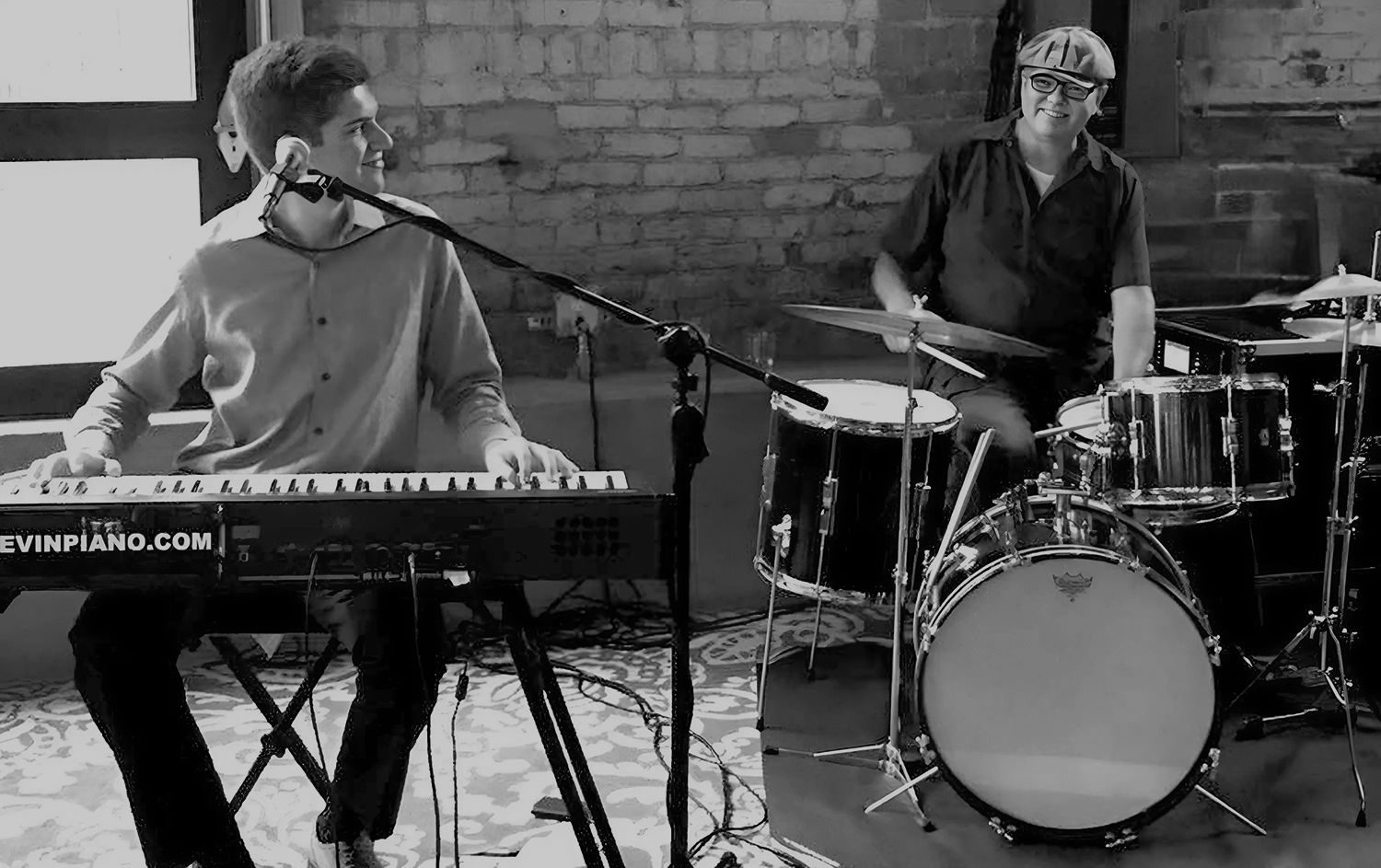 Ben Levin and Ricky Nye performing at Lucius Q, Cincinnati, OH, 2018 | Photo: Aron Levin
Ben Levin and Ricky Nye performing at Lucius Q, Cincinnati, OH, 2018 | Photo: Aron Levin
You mentored Chase Garrett and Ben Levin, who both went on to great acclaim in the boogie woogie and blues universes. Provide some insight into the roles you’ve played in kicking off their careers.
I went to Des Moines to play a gig in 2000. The day after I arrived, I got an email that said, “Hi, I’m Chase Garrett. I'm a 16-year-old piano player and l acquired some of your CDs. I learned one of your pieces, 'Creole Boogie,' and made a homemade CD I’d like you to hear. Will you be coming to Iowa anytime soon?” I could have received that email a week later, but very fortunately it arrived while I was there.
So, I contacted Chase’s parents and they brought him to a backyard party I was playing. I invited him up and he played “Creole Boogie” exactly like me. Then he played some blues and began to sing, and I was thoroughly amazed.
I suggested to Chase that he make a proper album. I said, "If your folks will let you, come to Cincinnati for three days and we’ll do it." And we did.
Ben Levin, who’s 25 now, is someone I started teaching in 2007 at age eight. He’s now a leading blues pianist, known around the world. He has released six albums to date, and I had the pleasure of producing his first two releases and playing drums on the first one.
I’m very proud to have been involved in the careers of both of these greats.
In 1998, you established the Blues & Boogie Piano Summit. Talk about your passion and drive to create and curate the festival, and the rewards and challenges involved.
The first unofficial summit in 1998 happened by accident. A friend of mine named Carl Sonny Leyland from California, who’s a straight up piano genius, flipped the switch for me when it comes to playing this music. Through him, I tried to learn how to play properly and authentically.
One day, Carl contacted me and said “I’m coming to Indianapolis. Can you dig up a gig for me near you?” I said “I’ll see what I can do.” I was able to arrange for him to perform at Southgate House, a wonderful concert venue in Newport, KY, near Cincinnati.
Previously, I had met Renaud Patigny in 1997 at The Arches Boogie Piano Stage, which was part of the Cincy Blues Fest. He’s a pianist from Brussels, Belgium who eventually started bringing me to Europe to perform. The next year, I got an email from him saying, “I’m coming back to the States.” This coincided with the Leyland gig, so I said “Can you play this show with us?” So, suddenly, I’ve got four piano players for this event, including me, Carl, Renaud, and the legendary Big Joe Duskin, who also agreed to play. I was so happy. It was truly an excellent evening.
Renaud talked to me about his own concert series in Brussels. He had multiple sponsors and a lot of organization. And he said to me, “You can do this too where you are.” I said “Okay, I'll do it.”
So, 1999 comes around and I secured Southgate House again. But I just about had a cerebral hemorrhage doing all the work myself. But I got it done, and that was the first official Blues and Boogie Piano Summit.
I developed exchange programs with other pianists in which I’d play summits overseas, and those musicians would come over and play in the States. It’s a small pool of people playing this stuff, so it became a network. It was an inspiring thing to make happen and a true labor of love. But as I said, it was very challenging. I had to seek out sponsors, and if I lost one, I’d have to find another one. It was very stressful.
I did this for 18 years and it took on its own life and achieved some great traction. People consistently attended and it was amazing. But then something happened during the 2016 festival, ahead of the U.S. election. I felt that the public was pretty clenched. Not as many people were interested in going out and having a good time. We had a bad turnout and I lost thousands of dollars out of my own pocket. I thought it was because of the election and that 2017 would be better. But the 2017 event tanked even worse. I said to myself, “Man, I can’t run this risk anymore.”
So, that’s why it ended. Another element is that when I started, I could afford airfare, and that rose in cost dramatically. It used to be really easy to bring people over from Amsterdam and Paris for $500 roundtrip. That began to double and triple.
But there's good news. I’ve been able to organize another Blues and Boogie Summit for November 2025 at Memorial Hall in downtown Cincinnati. I’ll have the venue’s promotional machine behind it and it won’t be a solitary effort. I’m very excited about it. We’ve done the numbers and we’re looking forward to making it a success.
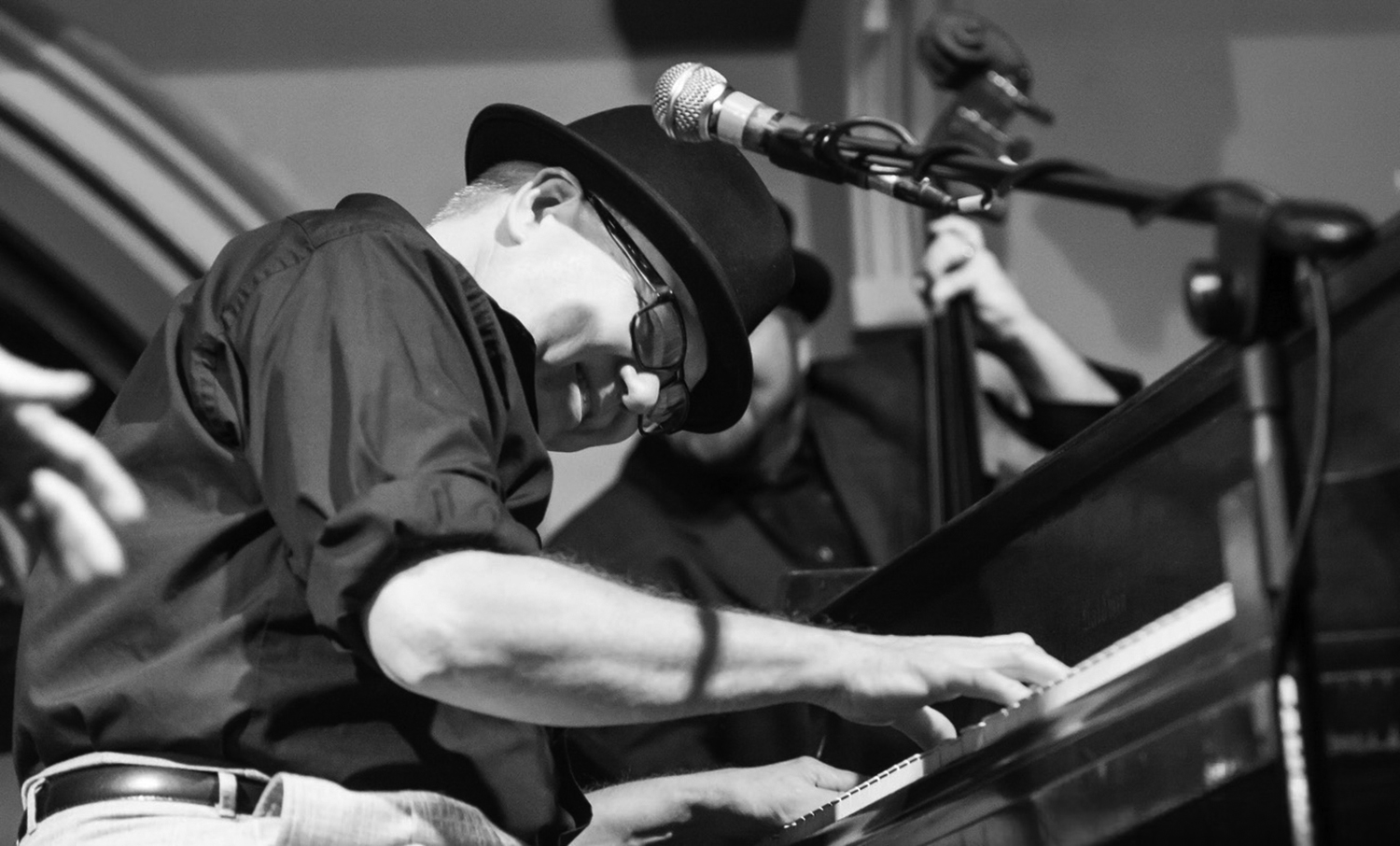 Photo: Lisa Duesing
Photo: Lisa Duesing
Why do you feel boogie woogie has more of a footprint in Europe than America, where the form originated?
There are two reasons. A pianist named Bob Seeley, who unfortunately just passed away, was a leader in boogie woogie, blues, stride, and ragtime. He played five nights a week like an athlete for over 25 years in Troy, MI near Detroit at a place called Charley’s Crab. He’d play The Arches Boogie Piano Stage at The Cincy Blues Fest every year the stage was in existence.
Once I asked Bob, “Why is everybody so nuts about boogie woogie and swing in Europe?” He replied, “It’s because it’s the sound of freedom. It’s the music that was in the air at the end of World War II. It was celebratory music. People are very nostalgic about that time and have fond memories. There’s an emotional connection to the music.”
Another reason is the German pianist Axel Zwingenberger. He had been arranging and performing this music to great acclaim since his twenties. In 1974, he played at the First International Blues and Boogie Woogie Festival in Cologne, West Germany. He helped create a major following for this music in Germany and Western Europe, which continued over the decades. Young pianists studying classical music went hog wild over this style and began playing the music themselves, creating generations of interest in it. So, Axel was very integral to boogie woogie piano continuing and expanding. Axel is still with us and is still representing the style.
It's interesting to consider that my friends in Paris are people I’ve learned more about the blues from than anyone here in the States. They’re deep into it. Sometimes people don’t appreciate what’s in their own backyard. We still have a lot of European bands playing traditional jazz from St. Louis, New Orleans, and Kansas City. They have such deep respect for the music and play the hell out of it. I’ve used that as inspiration to do my best with the forms here at home.
Discuss the vision and approach behind your latest album The Vevay Sessions.
I wanted to do something that was a little more rooted, and perhaps less jazzy. For this record, I chose to work with friends Jerry King on upright bass, and Anthony Ray Wright on drums and guitar, with Eli Gonzalez on tenor and baritone sax.
We initially got together to record three tunes because we hadn’t played together frequently, and it was clear that everything was feeling good. I thought, “Man, I am loving this.” So, we went ahead and made a full-length album at Jerry’s studio.
Again, it’s organic music, not polished pop music. What was also cool is that Jerry and Anthony could have easily traded roles on the record, both being multi-instrumentalists. And we were naturally in tune with each other when it came to playing this music.
You’ve spent the majority of your career in the Greater Cincinnati area. What makes it special for you?
The scene is so rich and deep. There are wonderful musicians on every block here that are great. I’m really appreciative and happy to be here. I moved from the area to Boston in 1974 when I was 18. And I moved back here in 1979 because I predicted I was gonna play with The Raisins after first hearing them. And since I moved back, I never felt like I needed to leave again. Every year since, I’ve met gifted and significant musicians coming up through the ranks.
Also, the deep music history in the region is serious. I’m talking about King Records and Herzog Recording Company. Cincinnati was Music City before Nashville was Music City.
There’s so much stylistic diversity here, too. You’ve got alternative rock, blues, country, pop, Americana, and bluegrass—you name it, you'll find it.
There are also always venues to play as a working musician. The mix is always changing, but there are always opportunities. It’s a wonderful community.
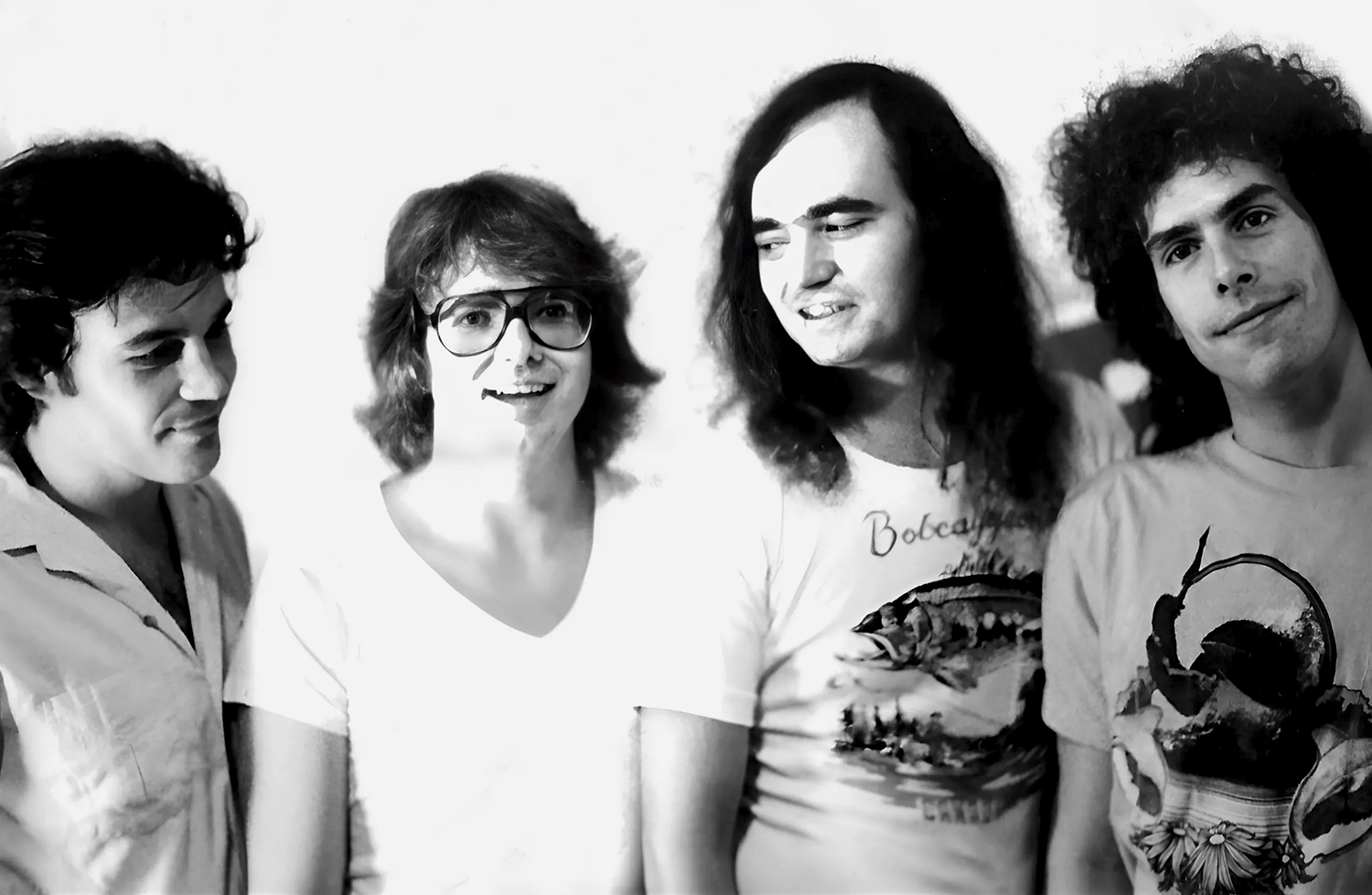 The Raisins, 1981: Bam Powell, Ricky Nye, Bob Nyswonger, and Rob Fetters | Photo: Ken Neiheisel
The Raisins, 1981: Bam Powell, Ricky Nye, Bob Nyswonger, and Rob Fetters | Photo: Ken Neiheisel
Tell the tale of you joining The Raisins.
I was living in Boston and attending Berklee College of Music between 1974-1976, studying for a composition degree. I got three years of the degree done in two years time, and was cooked. I needed to step away from school.
After I left school, I played in a couple of bands. By the time I got to 1978, I had an idea for what would be an ideal group for me, which is a four-piece in which every member is integral.
I came home to visit Cincinnati in August 1978 and my brother said to me, “You’ve got to see this band called The Raisins.” My goal was to sit in with every jazz, country, rock, and blues band I saw. Then we went to see them, and my jaw dropped. I thought, “That’s the band that’s been living in my head and I’m seeing them right now.” I badgered them to let me sit in with them that night. They were playing covers, plus their own numbers. I remember singing the Steely Dan tune “Black Friday” with them and playing Minimoog on the Warren Zevon song “Nighttime in the Switching Yard.”
The next time I came back to Cincinnati, they actually invited me to sit in again. I eventually moved back to Cincinnati in the spring of 1979 and I had it in my mind, “That’s it. I’m going to play with The Raisins whether they know it or not.”
Every Monday, I’d go see The Raisins at Shipley’s, where they had a weekly residency. At the time, their previous keyboardist Tom Toth, who’s also known as Tom Caulfield, had left. They had a new guy that obviously to me was not appropriate for the band. Every time I’d see them I’d leave feeling despondent.
By the time we get to summer 1979, I was talking to Rob Fetters, Bob Nyswonger, and Stan Hertzman, who was their manager at the time, during a set break and said “I love you guys so much, but I can’t do this to myself anymore, because I need to be playing in your band. So, I wish you all the best.”
Three days later, Hertzman called me and said, “The guys want to see about getting together with you.” So, one year after I first sat in with them, I was in the group. I kind of nudged my way into the band. [laughs]
Describe the wild ride you went on with The Raisins, including recording one studio album, meeting Clive Davis for a possible deal at Arista, and then eventually breaking up.
Hertzman arranged for us to make a record. Adrian Belew was friends with Rob and Bob, going back to his Frank Zappa days. So, Adrian came onboard as the producer, but the truth is we were such a well-oiled machine I didn't feel we really needed one. It’s like when Al Kooper produced Lynyrd Skynyrd’s first album. Kooper said something to the effect of, “I didn’t have to do anything. They had all their arrangements and solos in place. Everything was ready to go. They had rehearsed so deeply that they had made the album before recording it.” Of course Adrian provided input, but we were just so freaking tight.
So, we made the album and had a regional hit with “Fear Is Never Boring.” It got played consistently on the major local radio stations. It really took off. I remember walking into a gas station and we were on the radio, and I said to the girl behind the counter, “That’s my band.” She said, “I like them, too.” I replied, “No, I mean that’s my band, I play in that band.” [laughs]
So, that was a big bump up. It was the sort of break that could have led to a major record deal. And suddenly, we were opening for Billy Idol, Men at Work, and Loverboy.
Robert Christgau gave us a very positive review for the album in The Village Voice. Clive Davis caught wind of it and became aware of us. He sent one of his A&R people to come see us in Cincinnati twice, and then Clive himself came down.
Unfortunately, Clive came to Alexander’s where we played on Mondays, and that evening Monday Night Football was on. The venue wouldn’t turn the TVs off when we played. Normally, we’d pack the house, but for some terrible reason only a third of the regular crowd came to see us and a lot of people were distracted watching the game. So, Clive didn’t see us in our element, unlike his A&R guy who had seen us previously when the crowd was raging.
As it also turned out, Davis was also looking for a solo artist, which would have been Rob. He was also confused because all four of us were so active in the band. We were an act like Fleetwood Mac, with multiple singers. Davis told us, “You don’t have focus.”
We had clever arrangements and ethereal aspects, yet we were rooted. We were an American art rock band, if you will. But it was too difficult for Davis to get his head around. We weren’t just one flavor and we weren’t easy to sell. So, those are the reasons why Arista didn’t happen.
After a while it began to feel like me and Bam should have a band due to our experience playing in country bands together, and Rob and Bob should have a band—which they eventually did with Adrian Belew called The Bears. All of this pointed towards The Raisins calling it quits.
We were gaining momentum. “Fear Is Never Boring” busted out, and for a while we were doing bigger shows and major street festivals, but that momentum didn’t last. There were also other personal problems in the band that impacted the experience.
We all agreed it was time to go our separate ways in 1985, and played a handful of final shows. After that, Bob and I took three weeks to listen through shoe boxes full of cassettes to make the Everything and More collection that included mostly live recordings from over the years.
And that was that. It was just like going through a divorce. There were, for me, the typical feelings of anger and denial in the end. But we got past it all, and today we’re all friends. Rob, Bob, and Bam all continue to be important songwriters and performers. I chose to become a stylist of traditional forms and took a hard left into my areas of interest.
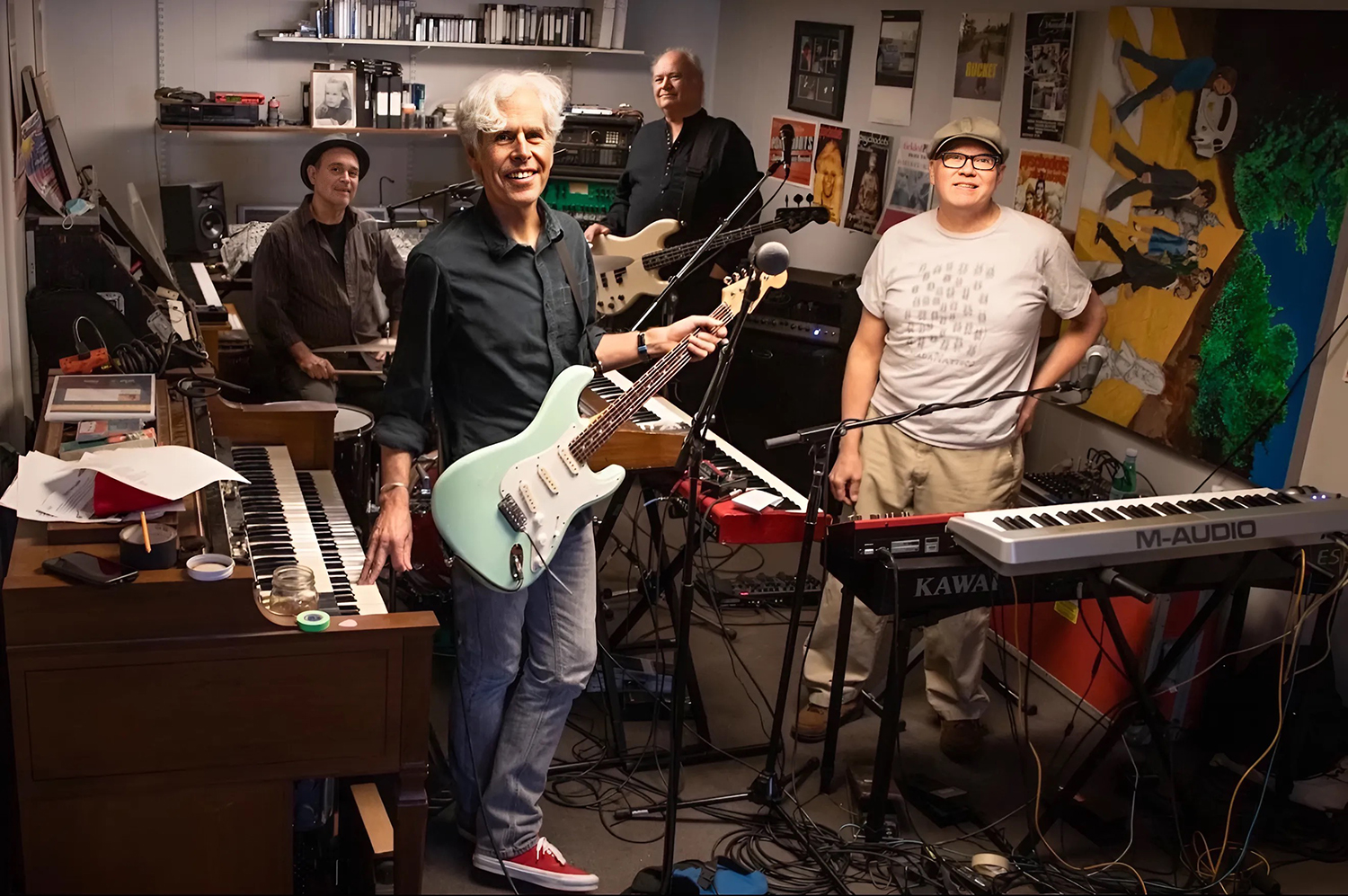 The Raisins during reunion rehearsals at Bob Nyswonger's home studio, Cincinnati, OH, March 2024 | Photo: Michael Wilson
The Raisins during reunion rehearsals at Bob Nyswonger's home studio, Cincinnati, OH, March 2024 | Photo: Michael Wilson
The Raisins reunited to do three gigs last March and another three this November. Describe how the shows came about and what the experience has been like for you.
Tim Miller, Rick Mosher, and Bob Mitchell are three musicians who are friends and fans of ours. They had a group called The Ferns back in the day and did some shows as “Not The Raisins” in Cambridge, MA. They had this idea of getting us to reunite and having all the proceeds go to charity, which provided our motivation. We decided to give half of the money to The Freestore Feedbank, which provides food and clothing to needy people. Play it Forward, which helps musicians with money for medical expenses, is the other charity.
I thought it was a great idea, but I admit, I was concerned whether or not people would remember us and come out to the shows. And in fact, all three March shows sold out in a couple of hours. There was crazy enthusiasm for it. That made us feel very good and we of course wanted to do our best.
I had to work hard to nail my old parts. We spent three weeks in Bob’s basement studio rehearsing ahead of those shows. It’s a small room, so we were right next to each other, but that was perfect for making everything work. It’s how we used to rehearse, too.
I had to create a new keyboard rig, and the guys in the band were patient with me. I admit I had some anxiety because I hadn’t played in a context like this in a long time, whereas the other guys already had their equipment and sounds, and they had continued focusing on rock and pop stuff since The Raisins. So, rehearsals were pretty daunting for me, but the spirit was positive.
Eventually, we moved to a real soundstage and set up as we would for the shows that took place at The Woodward Theater in Cincinnati. I had so much to pay attention to, in terms of sound changes and keyboards. I had four keyboards on stage. Usually, I’m just at a piano or organ when I play these days. But I got it together and made it happen.
The shows were joyous. To look out into the packed crowds and see everyone smiling and singing along was amazing. And then we’d go out and meet the fans after the show and people would say things like, “Man, you changed our lives,” to which I’d respond, “You changed ours." It was beautiful.
I have to give a lot of credit to Rob and his kids Noah Fetters and Sam Fetters. Noah handled tech, and Sam handled the merch.
And we’re doing it again. There were a lot of people who weren’t able to get tickets and we wanted as many people as possible to see the band again. There’s still a lot of interest, so we chose to do another run of gigs, which I’m sure will be a lot of fun, too.
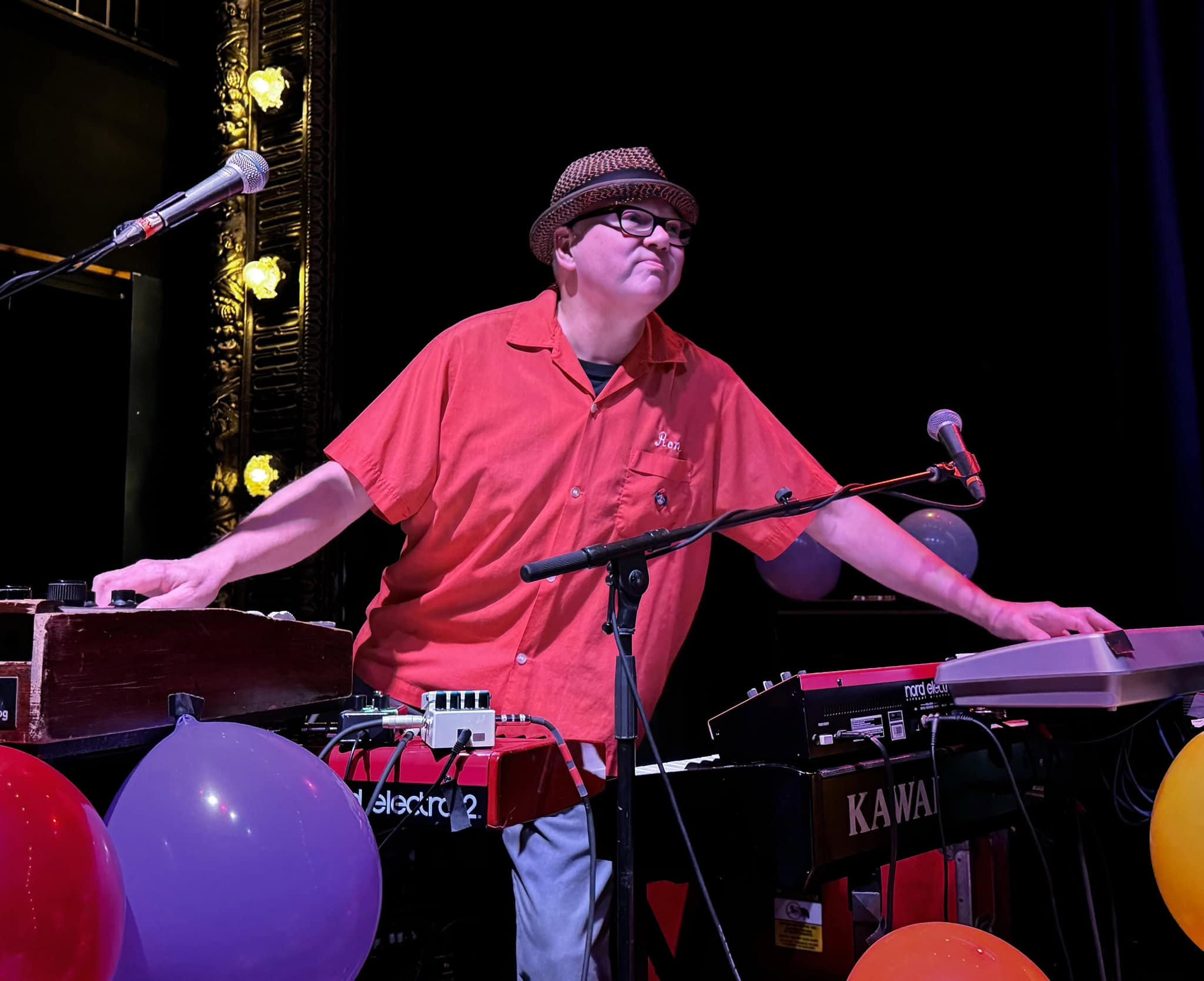 Ricky Nye in concert with The Raisins at The Woodward Theater, Cincinnati, OH, March 2024 | Photo: Anil Prasad
Ricky Nye in concert with The Raisins at The Woodward Theater, Cincinnati, OH, March 2024 | Photo: Anil Prasad
Discuss how The Bends documentary on The Raisins emerged and your thoughts on it.
It was made by Mike Tittel, who is a long-time friend of ours. He’s a fellow musician, photographer, and videographer, and was most definitely the right person for the job. He did some filming during the March reunion shows, and after conducting several interviews with us, he had enough ammunition to tell the band's story.
The first intention was to make a 20-30 minute mini-documentary, but once Mike got into filming, he wound up with a lot more useful footage that he felt was important in telling our story. In fact, his first cut was approximately three hours long. The final cut is 70 minutes long.
Rather than compiling footage from back in the day, or engaging in interviews with those close to us or those whose lives the band impacted, Mike chose to speak with the band members individually and exclusively. I think that makes Mike’s documentary unique.
He worked tirelessly on this project, and the band is extremely grateful to him. I'm very happy with everything about this documentary. I’m also pleased that those who weren't around during our heyday can now catch a glimpse into our little world.
What’s your perspective on the state of the recorded music industry?
When I grew up, our TV sets had three channels. When it came to recordings, there were a handful of major labels and a whole lot of regional labels, such as Stax, King, Sun, and Chess. But now, there’s an incredible glut of music and releasing a recording is like reaching out in the dark.
Today, the way bands manage to make it to, say, late-night talk shows or the covers of music magazines makes you wonder. Many of them had TikTok, YouTube, or streaming notoriety. They had the most streams or likes, but it seems there are not as many substantial stars these days like in previous eras. But I’m not part of that anyway. I create specialty music and I don’t participate in the grand pop scene. But what happens at the larger level affects people like me when it comes to distributing music.
Previously, people wanted a hard copy of your music, which is typically a CD. Well, that’s going out of fashion. Fewer people now come up to musicians after a show to buy a CD and have you sign it. For instance, at festivals, I used to sell approximately 60 CDs. At a festival I played a few months ago, I sold one CD. Now, if I manage to sell four CDs, I’m happy.
Today, I get people coming up to me saying, “Hey, I heard your record on streaming.” That’s great for them and so convenient, but what do we musicians get from that? Pretty much nothing. In fact, a couple of years ago, I got pissed and took all my stuff off streaming. And then I realized I only hurt myself, because even if it doesn’t generate any money, it’s promo. It’s how people decide if they want to attend a concert. It’s how they preview things.
There’s a vast forest of artists and it’s hard to have anyone find you through it. There are so many musicians without track records that you’re essentially competing with for attention. Artists are popping out of nowhere all the time in today’s environment.
So, that’s the world independent musicians like me are living in.
What are your thoughts about the unique value music delivers in today’s complex world?
Music is a salve. It’s good for so many things. It unlocks your mind. It takes you back in time. It elevates your mood. And it can heal.
There's a documentary called Alive Inside: A Story of Music and Memory, which is about a movement to provide music as a tool for memory patients. Instead of relying on big pharma, they use music to trigger positive memories. It’s a beautiful use of music.
Music’s capacity to communicate emotion is so important. That holds true regardless of the genre you’re involved in. It’s something that touches people incredibly deeply and it’s why, despite the challenges we just talked about, I remain so happy to be a performer that goes out there and helps put some positivity into the world.